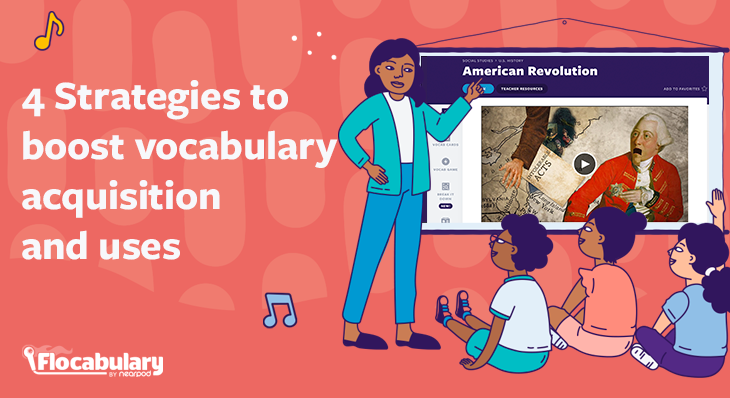
4 Strategies to boost vocabulary acquisition and uses
I have always been passionate about music songwriting and how one’s extensive vocabulary acquisition can play a crucial role in one’s success as an artist. Daniels (2019) compared the number of unique words used by famous hip-hop artists.
At the time of its publishing, rapper Aesop Rock was well above his 150 peers studied in the dataset. Through Aesop’s love for words and language, he developed his skills as a rapper and songwriter, using his vocabulary to create powerful lyrics that resonate with his audience.
As an educator, I know how important a vast vocabulary is and how it can enable all school-community stakeholders to communicate effectively. A commanding grasp of vocabulary helps make complex concepts accessible and easy to understand. Students and teachers with the ability to use language in creative and engaging ways tend to connect with each other on a deeper level, fostering a love for learning and inspiring one another to reach their full potential.
What is vocabulary acquisition?
Vocabulary acquisition refers to the process of learning and acquiring unfamiliar words and their meanings, either through direct instruction or through exposure to language in different contexts. Defining components of the vocab acquisition model are pronunciation, definition, and use. It involves expanding one’s vocabulary and developing a deeper understanding of words and their nuances, which is essential for effective communication, comprehension, and expression. This is an ongoing process that starts in early childhood and continues throughout life, and it plays a crucial role in academic success, career development, and overall cognitive development.
Why is vocabulary acquisition important for student learning?
Vocabulary acquisition is a vital component of academic success for students of all ages, but it’s particularly important for K-12 students. For young students in kindergarten through third grade, vocab acquisition is critical for developing early literacy skills and building a solid foundation for future learning. During these formative years, students are constantly exposed to unfamiliar words and concepts, and their ability to comprehend and express themselves using appropriate vocabulary can have a significant impact on their academic and personal growth.
As students progress through elementary and middle school, their vocabulary must expand to include academic and domain-specific language, which is essential for success in subjects like science, social studies, and math. In high school, students must develop a sophisticated understanding of language and discourse to effectively engage with complex texts, communicate their ideas clearly and persuasively, and prepare for college and career success.
Overall, a strong vocabulary is essential for students to succeed academically and become confident, effective communicators.
How do you teach vocabulary acquisition?
Teaching vocab acquisition to K-12 students requires a multifaceted approach that includes both direct instruction and immersive experiences with language. Teachers can introduce unfamiliar words through various strategies, such as using context clues, providing definitions, and connecting unfamiliar words to familiar concepts or experiences. Additionally, teachers can create engaging activities that help students apply and reinforce their understanding of new vocabulary, such as games, discussions, and writing exercises.
Incorporating technology is another effective way to enhance vocabulary instruction and acquisition for K-12 students. Educational apps and online tools can provide interactive and engaging experiences that promote word learning and retention. For example, digital flashcards, vocabulary games, and word cloud generators can help students learn and practice unfamiliar words in fun and engaging ways.
Additionally, multimedia resources such as videos, podcasts, and online articles can expose students to various vocabulary in context and help them develop their ability to infer meaning from context. By combining these strategies, teachers can help K-12 students develop a solid foundation of vocabulary knowledge that will support their academic and personal growth.
Flocabulary is a digital learning platform that utilizes engaging educational hip-hop videos and other resources to teach a wide range of subjects to K-12 students. Flocabulary recognizes the importance of vocab acquisition for student success and has developed various strategies to help students learn and retain new vocabulary.
4 Strategies to boost vocabulary acquisition and uses
1. Leverage contextual learning
Vocabulary acquisition strategies can help students in their understanding of unfamiliar words. It’s important to use contextual learning to help students understand and retain new vocabulary words. Instead of providing definitions, use the vocabulary words in stories or real-life scenarios to have them make connections to the context.
Flocabulary places unfamiliar words in the context of engaging and relevant stories or scenarios. By showing students how words are used in context, they better understand the definition of the word and how it’s used in real-life situations.
For instance, in a Flocabulary video about the American Revolution, the word “monopoly” is introduced as a concept of having exclusive control of a product or service. The song’s lyrics explain how the British government was imposing laws and taxes on the colonists to monopolize the sale of tea. By presenting new vocabulary in this way, Flocabulary helps students to contextualize better and remember the words they are learning.
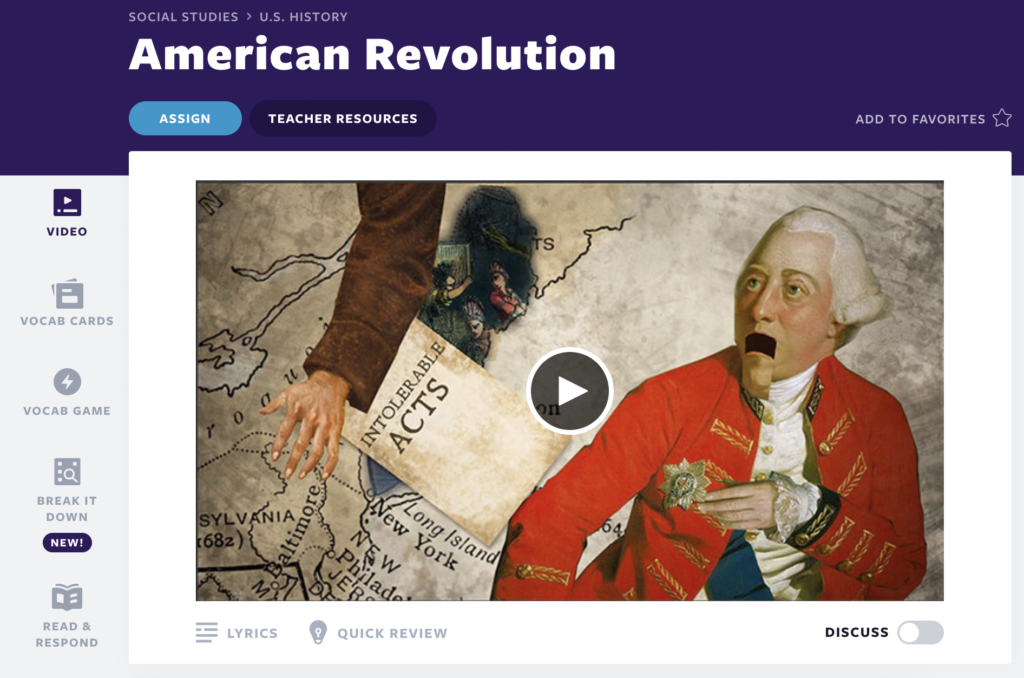
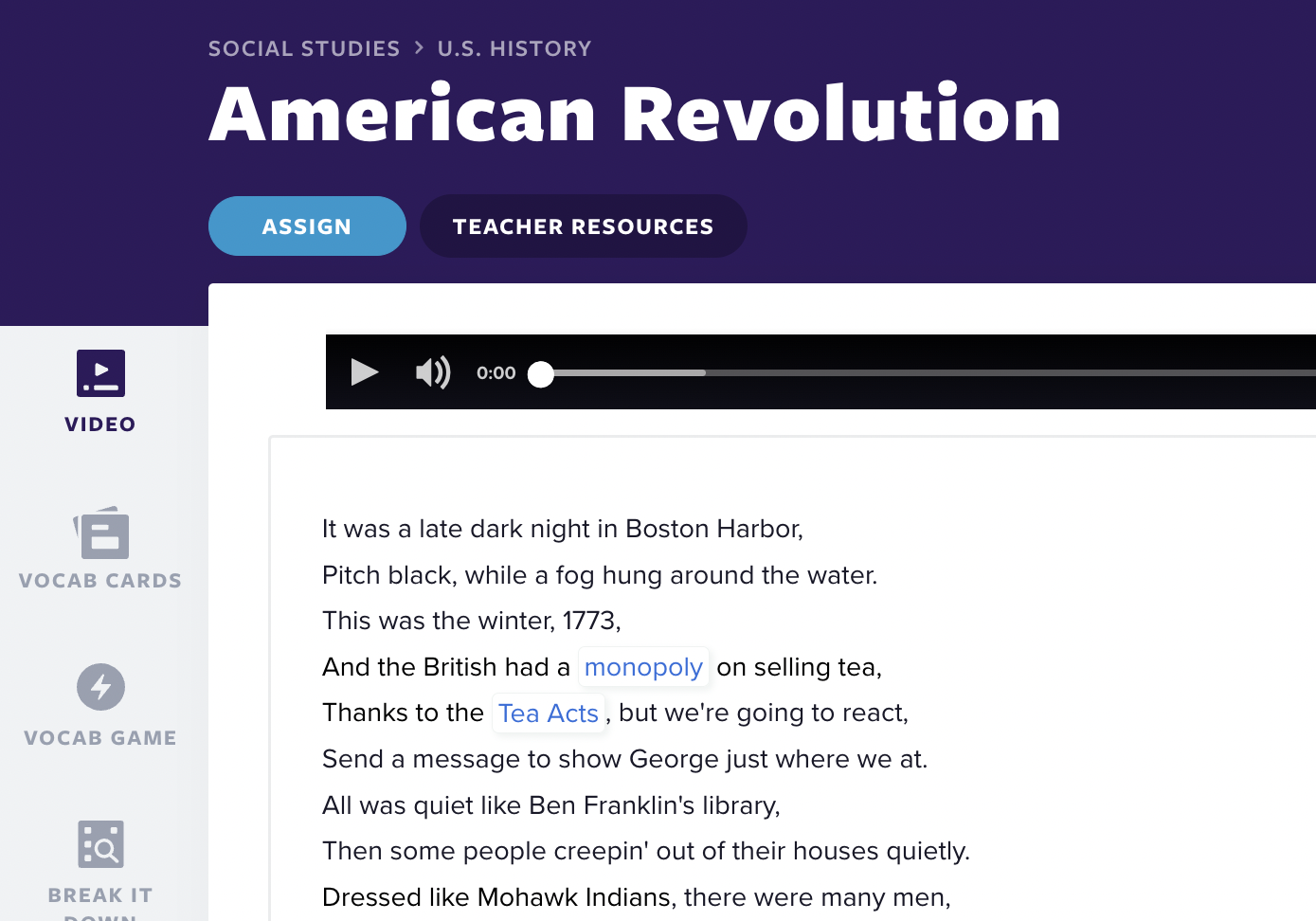
2. Use repetition and reinforcement
Use vocabulary repetition and reinforcement to help students retain new vocabulary words over time. After introducing unfamiliar words, Flocabulary provides opportunities for students to practice and reinforce their understanding of the words through various interactive activities, such as fill-in-the-blank worksheet exercises, Quizzes, Read & Respond, Vocab Games, and Vocab Cards.
For example, after introducing the word “monopoly,” Flocabulary might provide a Read & Respond or writing prompt in which students are asked to use the word in a sentence or explain how the concept of monopoly relates to the American Revolution. By repeatedly exposing students to unfamiliar words and providing opportunities for practice and reinforcement, Flocabulary helps students internalize new vocabulary and incorporate it into their daily language.
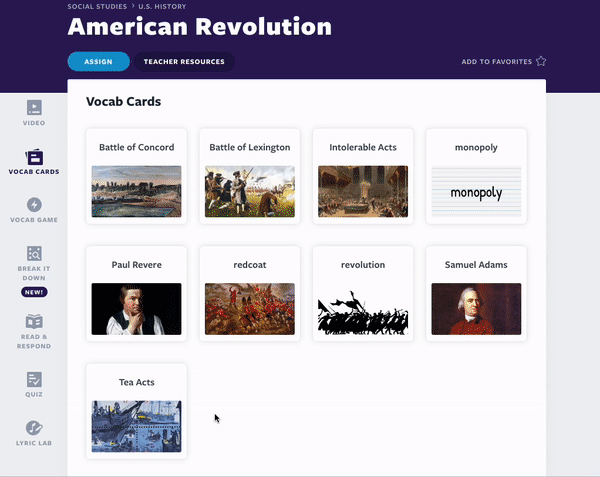
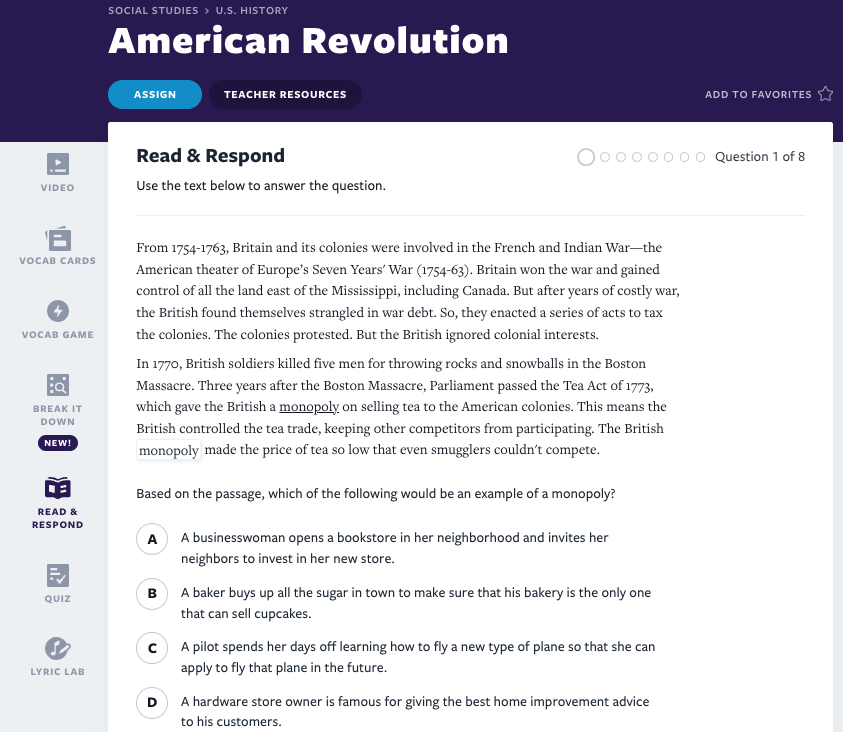
3. Implement multimodal learning
Multimodal learning engages students and appeals to various learning styles. In addition to hip-hop videos, Flocabulary provides a range of other resources, such as Lyric Lab, Break it Down for Flocabulary Plus subscribers, and the short answer-response prompts within, to help students understand and apply new vocabulary in diverse ways.
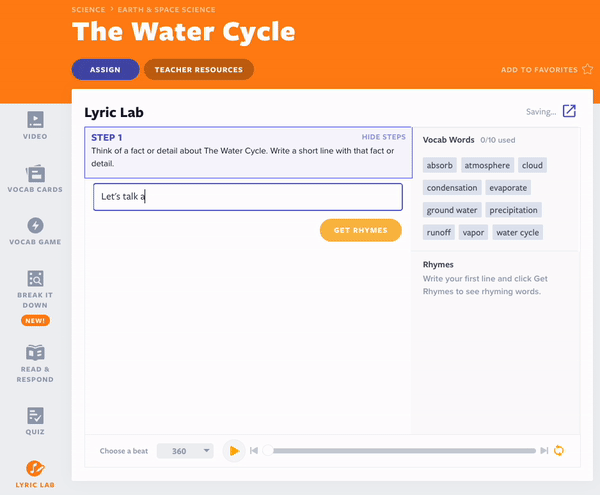
For instance, after watching a Flocabulary video about the water cycle, students might use Lyric Lab to create their own version of the song, including their interpretation of the distinct stages of the cycle matching the vocabulary words associated with each stage. By providing a range of resources and activities that appeal to different learning styles, Flocabulary helps students to engage with new vocabulary in meaningful and memorable ways.
4. Personalization through data-driven insights
Tracking and accessing student insights helps teachers understand how students are understanding instruction. Data-driven insights provide opportunities for personalized and differentiated learning, especially with vocabulary.
Flocabulary uses personalization to tailor the learning experience to each student’s needs and interests. By tracking student progress and providing feedback, Flocabulary focuses students on areas where they need more support and challenges them using individually generated practice sets that build on their level of word proficiency.
For example, the new Flocabulary Plus dashboard, My Analytics, gives teachers access to data identifying areas of strength and opportunities for remediation with their students. Teachers can then go further by using My Analytics to provide individualized vocabulary instruction to specific students. Regarding vocabulary instruction, research shows that students benefit from having multiple exposures to unfamiliar words when committing this new vocabulary to long-term memory. This new dashboard feature allows teachers and administrators to see data specific to these word exposures from a school-wide vantage point and right down to each individual student. A proficiency level of high, medium, or low will be assigned, and practice sets are auto-generated based on the school or student performance. This performance dashboard is scheduled to be released in time for Back to School 2023!

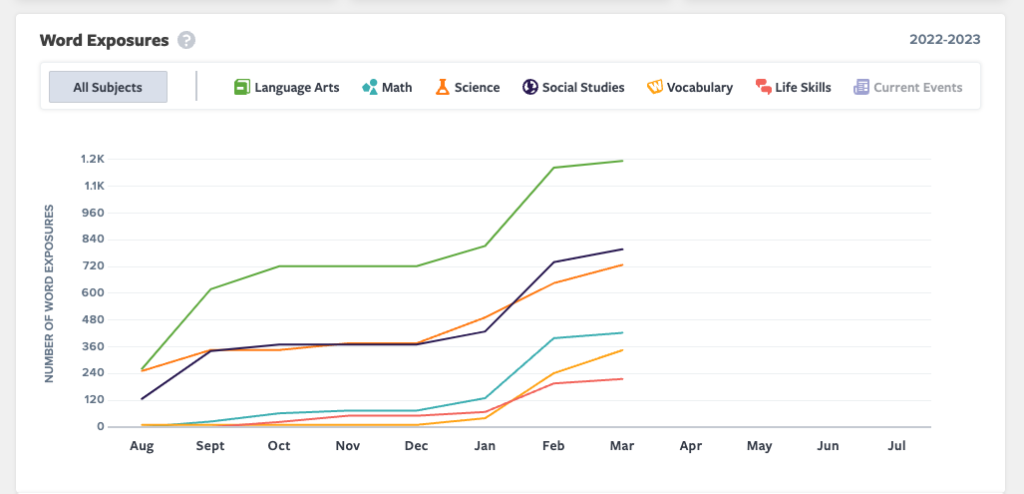
Boost vocabulary instruction and acquisition with Flocabulary
Hopefully, you’ve made a personal connection to the importance of vocab acquisition. Maybe you’re a rising songwriter who wishes to capture the hearts and minds of your audience through beautifully tailored lyrics that capture your knowledge of vocabulary and the strategies to perfect them. Nevertheless, no matter how unique, exciting, or mundane your occupation may be, vocabulary acquisition activities early on will pay huge dividends as you move forward in life.
By presenting unfamiliar words in engaging and relevant contexts, reinforcing student understanding through practice and repetition, appealing to a variety of learning styles, and tailoring the learning experience to each student’s needs, Flocabulary helps students to develop a solid foundation of vocabulary knowledge that will support their academic and personal growth.
Interested in learning more about bringing Flocabulary to your school or district?
